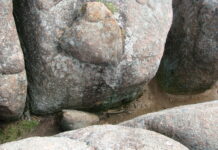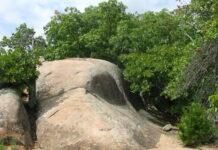Photo credit: DiasporaEngager (www.DiasporaEngager.com).
- African white diamonds are highly prized for their brilliance and rarity.
- Botswana, South Africa, Angola, and the Democratic Republic of the Congo (DRC) lead in diamond production across Africa.
- The push for ethical diamonds is gaining momentum as watchdogs demand transparency, fair labour practices, and environmental stewardship.
The allure of white diamonds has captivated humanity for centuries, symbolizing luxury, purity, and unparalleled beauty.
Among the world’s most coveted treasures, African diamonds stand out, not only for their exceptional quality but also for the rich, albeit complex, history of their origin.
We set out to explore the facets of white diamonds from Africa, delving into their market cost, sizes, mining practices, ethical considerations, and their role in luxury jewelry and investment portfolios.
Diamond Mining in Africa
Africa’s geological wealth is unparalleled, with countries such as Botswana, South Africa, Angola, and the Democratic Republic of the Congo (DRC) leading in diamond production.
In 2022, the Kimberley Process Certification Scheme data demonstrates Africa’s pivotal role in the global diamond industry. Leading the continent in diamond production was Botswana, with a haul of 24.5 million carats valued at approximately $4.7 billion.
Botswana’s output not only highlighted the country’s dominance in the diamond sector but also its significant contribution to the global market. Following closely was the Democratic Republic of the Congo (DRC), which secured fourth spot globally, with a production of 9.9 million carats worth $65 million.
South Africa and Angola also made notable contributions to Africa’s diamond output, ranking third and fourth, respectively. South Africa produced 9.6 million carats of diamonds, generating over $1.5 billion, showcasing its enduring legacy and expertise in diamond mining and marketing. According to Statistica, diamond mining employed over 14,000 people in South Africa in 2022.
Angola, not far behind, produced 8.7 million carats, yielding $1.9 billion in revenue. These figures not only reflect the rich diamond reserves these countries possess but also their capability to harness this resource for economic gain.
Beyond the top producers, countries such as Zimbabwe, Namibia, Lesotho, Sierra Leone, Tanzania, and Guinea contributed significantly to the continent’s diamond production, albeit on a smaller scale.
Zimbabwe’s earnings of $423.6 million, Namibia’s $1.23 billion, Lesotho’s $314 million, Sierra Leone’s $142 million, Tanzania’s $110 million, and Guinea’s $6 million, each tell a story of diverse potential and the challenges faced in maximizing the value of diamonds in Africa.
The diamond mining industry in Africa has, however, been a source of conflict and environmental impact, necessitating a closer look at ethical diamonds and sustainable practices in the industry.
Amidst Angola’s civil war, 1975-1991, 1992-1994 and from 1998-2002 insurgent factions exchanged diamonds to finance warfare, giving rise to the term “conflict diamonds.” As a countermeasure, the United Nations imposed sanctions to halt the insurgents’ trade in diamonds. As a result, the trade of conflict diamonds in Angola has ceased.
Angola now partakes in the Kimberley Process, an innovative collaboration among governments, the diamond industry, and non-governmental organizations, aimed at blocking the flow of conflict diamonds into the mainstream diamond supply chain.
The size and market cost of African diamonds
African diamonds vary widely in size, quality, and value. For instance, the Cullinan Diamond, discovered in South Africa in 1905, remains the largest rough gem diamond ever found, weighing an estimated 3,106 carats.
The uncut gemstone was presented to United Kingdom’s King Edward VII in 1907 and was subsequently divided into nine primary diamonds, labeled Cullinan I to IX, in descending order of size.
While not all discoveries are as monumental, African mines frequently yield diamonds of exceptional quality and size, commanding high prices on the global market.
For example, a 1-carat white diamond of good quality can fetch between $2,500 to $18,000, depending on its cut, colour, clarity, and origin.
With increasing concerns on climate change, the mining of diamonds is a critical concern for policymakers as it involves environmental degradation and the displacement of local communities.
Mines often require significant land use, leading to habitat destruction and water pollution in economies. Ethical sourcing initiatives and regulations, such as the Kimberley Process, aim to mitigate these impacts and ensure that diamonds are conflict-free.
Diamond mining also requires huge amounts of water for several activities, including the washing and processing of the ore. This practice can lead to the pollution of water bodies with sediments, chemicals, and heavy metals, negatively impacting both aquatic ecosystems and the availability of clean drinking water for communities.
Read also: The economics of human remains restitution in Africa
Ethical diamonds and sustainability
The push for ethical diamonds is gaining momentum as watchdogs demand transparency, fair labour practices, and environmental stewardship in diamond mining and sales.
Additionally, consumers are increasingly demanding assurances that their luxury purchases do not go a long way in financing conflict or harm across communities.
Conflict-free diamonds are those certified to have originated from areas free of armed conflict and human rights abuses, highlighting the importance of responsible sourcing.
Investments, luxury diamonds and diamond jewelry
Luxury diamonds represent the pinnacle of desirability in the jewelry industry, with African white diamonds being particularly prized for their brilliance and rarity.
High-end brands and designers often seek out these diamonds for their collections, crafting exquisite diamond jewelry pieces that symbolize status and sophistication.
From engagement rings to statement necklaces, the allure of white diamonds continues to reign supreme in the world of luxury.
Investing in diamonds offers a unique avenue for diversifying investment portfolios. Unlike other commodities, diamonds hold intrinsic value that can appreciate over time, especially for rare and high-quality stones.
Real estate, gold, silver, and diamonds typically increase in value in line with inflation. However, diamonds stand out for their durability and portability compared to the others. This is why, even if purchasing diamonds as an investment isn’t your primary goal, considering them as an alternative means of saving money is a wise decision.
Investors should, however, educate themselves on diamond education—understanding the “Four Cs” (Cut, Color, Clarity, and Carat) is crucial to making informed decisions.
The stability of diamonds as an asset class, particularly during times of economic uncertainty, underscores their appeal to savvy investors.
Diamond education is essential for anyone looking to purchase or invest in diamonds. The Four Cs determine a diamond’s quality and value, with each aspect contributing to the overall beauty and desirability of the stone.
African diamonds are renowned for their quality, but variations exist, making education a key factor in discerning value.
Read also: Australia’s Growing Footprint in Africa’s Mining Sector
The future of white diamonds from Africa
The future of white diamonds from Africa lies in balancing the industry’s economic benefits with ethical considerations and sustainability.
As consumers become more conscious of the origins and impact of their purchases, the demand for ethical diamonds and conflict-free diamonds keeps growing.
This shift presents an opportunity for African nations to lead in sustainable and responsible diamond mining, ensuring that these precious stones continue to captivate with their beauty while contributing positively to the communities and environments from which they are sourced.
Overall, African diamonds are not just symbols of luxury and beauty but also emblems of the complex interplay between nature, economy, and ethics.
As the industry evolves, the continued allure of these gems will undoubtedly depend on the commitment to responsible practices, ensuring that the legacy of African white diamonds remains as pure and brilliant as the stones themselves.
Source of original article: Industry and Trade – The Exchange (theexchange.africa).
The content of this article does not necessarily reflect the views or opinion of Global Diaspora News (www.GlobalDiasporaNews.com).
To submit your press release: (https://www.GlobalDiasporaNews.com/pr).
To advertise on Global Diaspora News: (www.GlobalDiasporaNews.com/ads).
Sign up to Global Diaspora News newsletter (https://www.GlobalDiasporaNews.com/newsletter/) to start receiving updates and opportunities directly in your email inbox for free.

































